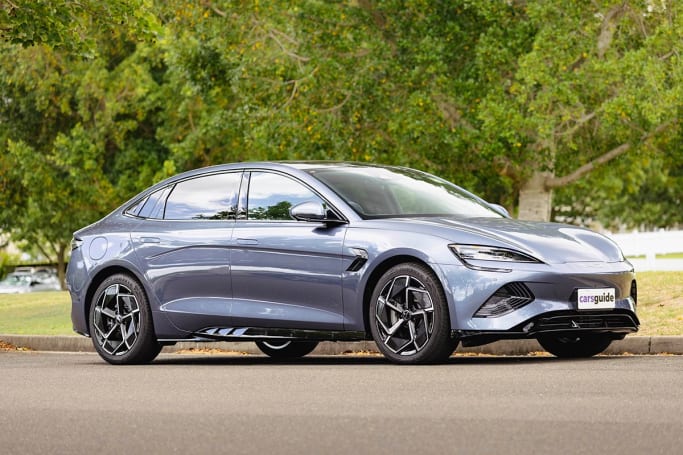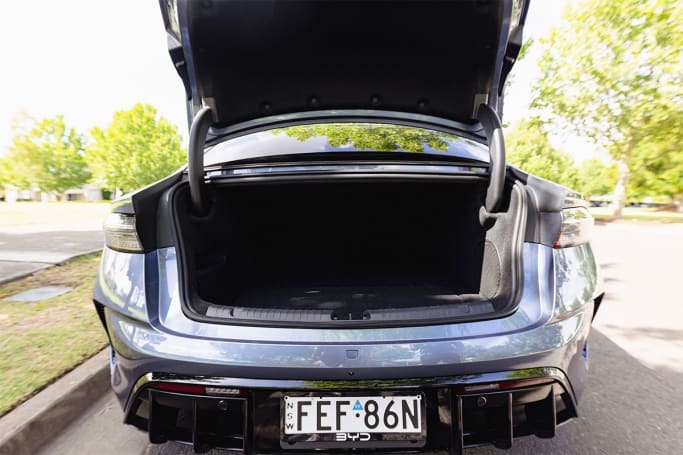As mentioned earlier, BYD isn’t pushing the Seal with the same ‘value’ focus as the Atto 3 and Dolphin. No car company ever likes to call their cars ‘cheap’ but there’s no denying the first two BYD models came with very sharp pricing, with the Dolphin arriving with the lowest price for an EV in Australia today.
BYD Australia is offering three variants of the Seal - Dynamic, Premium and Performance. The first two are single-motor, rear-wheel drive, while the latter gets a dual-motor, all-wheel drive powertrain.
The Dynamic is the entry-level model in the range and will be priced from $49,888 (all prices exclude on-road costs), the Premium starts at $58,798 and the Performance tops the range at $68,748.

BYD has been fairly generous with the standard specification, all three variants have LED headlights, LED tail-lights, glass roof, keyless entry and ignition, a 12-speaker Dynaudio sound system and a 15.6-inch multimedia touchscreen with built-in navigation and Spotify music streaming, as well as Apple CarPlay and Android Auto.
The key elements the Dynamic misses out on are the genuine leather-wrapped steering wheel (it has artificial leather), a head-up display, memory driver’s seat and gets a smaller battery and less powerful motor (which we’ll detail later).
The Premium adds a genuine leather steering wheel, the head-up display and driver’s seat with memory positions as well as the powertrain differences.

The extra elements for the Performance, aside from the powertrain, are the heated steering wheel and 19-inch alloy wheels; instead of the 18s on the Dynamic and Premium. There are also some notable powertrain and chassis changes we’ll drive into later.
For comparison purposes, the 2024 Tesla Model 3 is priced at $61,900 for the RWD version and $71,900 for the AWD variants, so BYD has managed to undercut its US rival with each member of the Seal family.
Also, despite the focus on quality over cutting prices, BYD has cut pricing, making the Seal Performance model $50 cheaper than it originally announced in order to meet the threshold for New South Wales and South Australian government EV rebates.


















